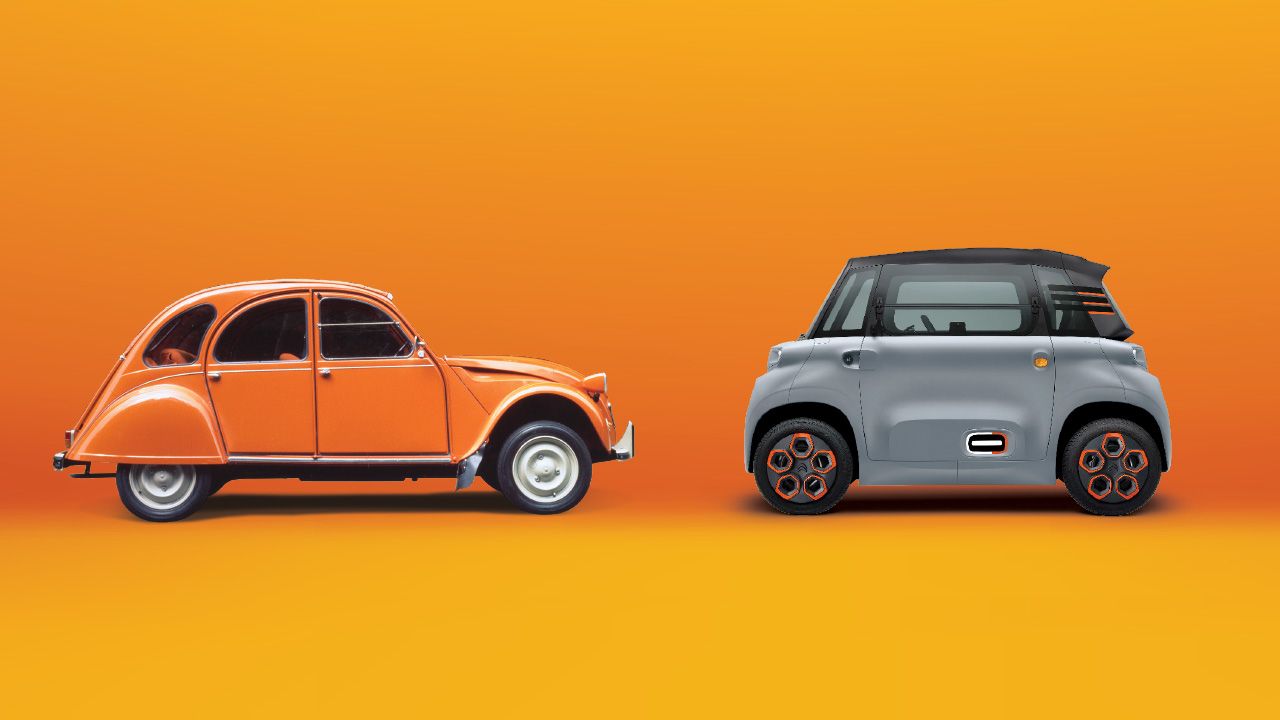
The spirit of the legendary Citroën 2CV lives on in the new Ami. Is it the 21st century equivalent of the Deux Cheavaux? And is it a future classic? Srini certainly thinks so.
Once upon a time, there was an ugly duckling. When people saw it for the first time, at the 1948 Paris Salon, they laughed and called it names. It was rather unfair to compare it to other beautiful swans that could whisk well-heeled people in great comfort and speed. Simply because it was not designed to do that, even though it was engineered to meet extremely tight specifications. The Toute Petite Voiture (very small car) – conceived well before WWII – was tasked to replace the rural horse cart. It had to weigh less than 300 kilos, carry four adults, attain a speed of 60km/h, deliver at least 20km to the litre, allow the farmer to drive with his hat on, carry 50kgs of potatoes or a keg, and this is the killer specification – drive across a ploughed field while carrying eggs, and importantly, not break a single one of them. Sure it was an ugly duckling, but it delivered on these suffocating requirements like nothing else before it, or after. It would win hearts the world over for its rugged simplicity, clever engineering, never-say-die spirit and cheerful attitude.
Think I’m overdoing it? In 1958-59, two explorers on a round-the-world drive in their 2CV ground to a halt in the middle of the Atacama Desert. The engine had run out of oil. A native carrying bananas happened to pass by, and, on a whim, the adventurers peeled a few bananas and stuffed them inside the crankcase. Et voila, the 2CV started and ran… Without a hitch for 300 more kilometres! This ugly duckling had absolutely no reason to turn into a beautiful swan.
Yes, the Citroën 2CV is a remarkable piece of global automotive history. I call it the ‘un-car.’ This stupendous piece of innovation on four (thin) Michelin wheels now has a successor, and it’s called the Citroën Ami. Successor, not in terms of a replacement for the legend, but because that spirit of innovation and back-to-basics engineering is now seen in the Ami. Compared to the modern iterations of the Beetle, Fiat 500, Mini and, heck, even the Countach, this is no retro mobile that attempts to evoke near-dead emotions and nostalgia. The new Citroën Ami is not a tribute to the original, nor is it a reinterpretation – it is an avatar that carries the noble spirit of its hallowed ancestor.
Like the original, it is also an un-car – technically a quadricycle, the Ami has been designed around a new era of mobility that is unfolding rapidly across most parts of the world as we speak. The Ami is essentially two doors on four wheels, and it’s difficult to make out whether it is coming or going! It’s built around a spaceframe that carries a 5.5kWh lithium-ion battery pack that takes three hours for a full charge from a standard electric socket. It offers a 70-km range and, with 8bhp powering the front wheels, tops out at 45km/h. With a super-compact footprint, it still offers space for two large-size adults with some space to spare for luggage.
Combined with its remarkable turning radius, the Ami is a perfect fit on tight city roads. The Ami has been designed to provide a safe, weatherproof alternative to the two- or three-wheeler and offer more flexibility and convenience than public transport. Citroën says that, in the one year that the Ami has been introduced in parts of Europe, customers include not just the urban commuter, but also those in semi-rural or rural areas. It also is an addition to multi-vehicle families for doing the quick grocery run.
In terms of engineering too, it is clever. Body panels are all interchangeable, and so are the doors. This means, one door is hinged at the rear, and one at the front! Like the original, the windows are split horizontally and hinge upwards. Inside too, there are some clever touches. A single stalk operates the wiper and the indicators, but the headlamps are always on. Colour customisation is possible with the removable holders and storage slots. The way it’s built, financed and sold is pretty clever, with an Ami Cargo commercial version too on the way. The Ami could be a great inspiration for a 21st century Tata Nano.
Curiously, instead of riffing on Deux Chevaux or 2CV, Citroën has named it after another classic in its heritage line-up – the Ami sedan, famous for its Z-shaped C-pillar profile. Perhaps it’s the French word for a friend – ami – that proved irresistible to the carmaker to introduce their unique solution for micro-mobility. A friendly French Revolution of sorts.
Read more:
Decoding Vision Zero for road safety
Wrong-side driving with the headlights on is so considerate!























Write your Comment